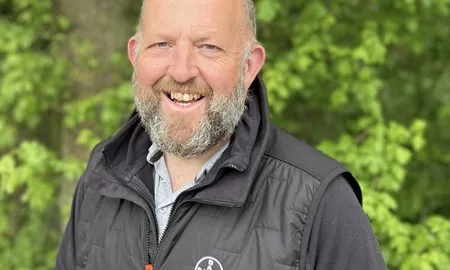Published on 29th August 2024
Local Insights
Help for agronomy challenges in the west this September

Current situation (20 August)
A little bit of rain had brought a halt to harvest as this is written but should have been helpful for those having or wanting to establish cover crops or oilseed rape.
Harvest is about 50% complete, I would estimate. On good land we’re never the earliest to combine crops in the west. Yields have been variable – I’ve not heard of anyone over here talking about really good yields, although I think spring crops might do well.
1) Look after glyphosate
Creating effective stale seedbeds will be crucial this season, perhaps even more than most, if growers drill earlier. Removing as many weeds as possible pre-drilling has to be an important part of making that decision work.
Looking after glyphosate and maximising its effectiveness is critical. Remember the stewardship messages – don’t put two applications on the bounce without using cultivations to remove any survivors. Make sure you have adequate leaf cover for the product to work effectively, and give it an opportunity to work before cultivating.
2) Earlier drilling will lead to higher input spends
Many growers will likely be thinking of drilling wheat earlier following last autumn’s challenges. But if you drill in September, you will have more grass-weed issues, higher risk of barley yellow dwarf virus, eyespot and Septoria.
If you want lower risk, then delay drilling into October. However, as we know to our cost from last year, October is becoming a consistently wet month, so you risk not getting the crop in.
There are no right or wrong answers. Go early and agronomy risks are higher and input costs will go up; go later and input spend should reduce, but you might not have a crop. I can’t tell you what to do, but if you sow early pick a variety that gives you a fighting chance with Septoria, and don’t sow your weediest fields first. Even a few days delay can help with weed control.
On top of that, think about your herbicide programme. Look at the actives and how persistent they will be. Earlier drilling means they won’t last as long as you might think, compared with an October sowing date because warmer soils mean they break down more quickly.
For example, flufenacet and cinmethylin have relatively short half-lives, so persistence won’t be that long, while relatively aclonifen and diflufenican will have more persistence. Aclonifen and DFF are also less affected by dry weather than some actives.
Our recommendation for pre-emergence is Liberator (flufenacet + diflufenican) + Proclus (aclonifen) to which you could add other actives, such as prosulfocarb or tri-allate as necessary.
For earlier drilling you’re likely to need to follow up within three weeks, which is where the cinmethylin products could feature. It’s probably safer to the crop in this slot than it would be pre-emergence, if it is wet.
3) Check labels carefully for winter barley
In winter barley crops, check labels as the rates and uses are not the same as for winter wheat. I would avoid growing winter barley at all on land with bad grass-weed infestations, because you are limited in what you can use.
You can still use Liberator + Proclus, but only up to 1.0 L/ha of Proclus rather than the 1.4 L/ha in wheat.
On land where the main weed challenge is annual meadowgrass and broadleaf weeds, an alternative pre-emergence choice could be one of the metribuzin containing products. These can help with the more difficult broadleaf weeds, such as groundsel, and can be used in either wheat or barley either as a pre-emergence or early post-emergence.
4) Use Magic Trap to check flea beetle migration status
Success with September-sown oilseed rape depends on the weather after sowing to some extent, but it has become a viable strategy for some growers looking at avoiding peak cabbage stem flea beetle migration.
Judging when that has occurred is one of the reasons for using one of our Bayer Magic Traps. These are water traps with a camera attached which identifies cabbage stem flea beetles and charts how migration is progressing. One way of using the information is to help determine when peak migration has passed and a safer drilling date.
If you go down this route, you need the right variety – a hybrid with lots of autumn vigour, which will get to a big enough size to survive a cold winter.
Liberator® contains flufenacet and diflufenican. Proclus® contains aclonifen. Liberator and Proclus are registered trademarks of Bayer. All other brand names used are Trademarks of other manufacturers in which proprietary rights may exist. Use plant protection products safely. Always read the label and product information before use. Pay attention to the risk indications and follow the safety precautions on the label. For further information, including contact details, visit www.cropscience.bayer.co.uk or call 0808 1969522. © Bayer CropScience Limited 2024



